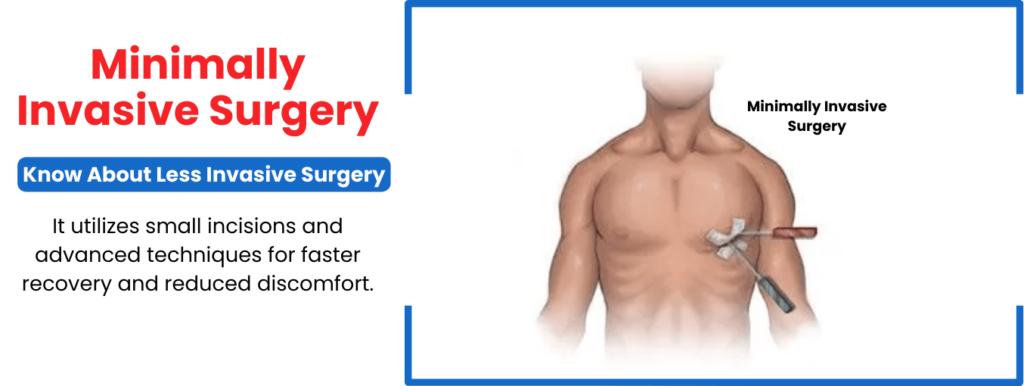Minimally Invasive Surgery

Understanding Minimally Invasive Surgery
Minimally Invasive Surgery (MIS) is a revolutionary approach to surgical procedures that involves smaller incisions, less pain, and quicker recovery times compared to traditional open surgery. In the field of cardiothoracic surgery, MIS techniques are used to treat a variety of heart and lung conditions, providing patients with effective outcomes while minimizing the impact on their bodies.
➤ Benefits of Minimally Invasive Surgery
Minimally Invasive Surgery offers numerous advantages, including:
- Smaller Incisions: Reduced scarring and minimal trauma to surrounding tissues.
- Less Pain: Decreased postoperative pain and discomfort.
- Faster Recovery: Shorter hospital stays and quicker return to daily activities.
- Lower Risk of Infection: Smaller wounds lower the risk of infections and complications.
- Improved Outcomes: Enhanced precision and better overall surgical results.
➤ Types of Minimally Invasive Procedures
Minimally Invasive Heart Valve Surgery
Minimally invasive heart valve surgery is performed through small incisions, often using specialized instruments and cameras to repair or replace heart valves. Procedures include:
- Mitral Valve Repair/Replacement: Addressing mitral valve prolapse or stenosis.
- Aortic Valve Repair/Replacement: Treating aortic valve diseases with less invasive techniques.
➤ Minimally Invasive Coronary Artery Bypass Grafting (CABG)
This technique involves performing coronary artery bypass surgery through small incisions, sometimes using robotic assistance, to bypass blocked arteries and restore blood flow to the heart.
Thoracoscopic Surgery
Also known as video-assisted thoracoscopic surgery (VATS), this procedure is used for lung resections and other thoracic surgeries. It involves the use of a thoracoscope (a tiny camera) and specialized instruments inserted through small incisions in the chest.
➤ The Procedure
- Preoperative Preparation: Before undergoing minimally invasive surgery, patients undergo comprehensive evaluations, including imaging tests, blood work, and consultations with their surgical team. These assessments ensure that the patient is a suitable candidate for MIS and help plan the optimal surgical approach.
- Surgical Techniques:
During minimally invasive surgery, the surgeon makes small incisions, usually between 1 to 3 inches, and inserts a tiny camera (endoscope) and surgical instruments. The camera provides a high-definition, magnified view of the surgical area, allowing the surgeon to perform precise movements. In some cases, robotic-assisted surgery may be utilized to enhance the precision and flexibility of the procedure. - Postoperative Care: After the surgery, patients are closely monitored in the recovery room and later in the hospital ward. Postoperative care includes pain management, physical therapy, and regular follow-up visits to ensure proper healing and recovery.
Why Choose Minimally Invasive Surgery?
Minimally Invasive Surgery is an excellent option for many patients due to its numerous benefits and effectiveness. Choosing MIS means opting for a modern, patient-centered approach that prioritizes your comfort, safety, and swift recovery. With a focus on advanced techniques and technology, our surgical team is committed to delivering the highest standards of care.
Frequently Asked Questions (FAQs): 👇
Most patients with heart or lung conditions can be considered for MIS, but suitability depends on individual health status and specific medical conditions.
Recovery times vary but are generally shorter than traditional surgery, with many patients resuming normal activities within a few weeks.
As with any surgery, there are risks, but MIS typically has lower complication rates compared to open surgery.
Postoperative care includes routine follow-ups, pain management, and physical therapy to ensure a smooth recovery.
Preparation involves preoperative evaluations, discussing the procedure with your surgeon, and following specific guidelines on diet, medication, and activity levels.
